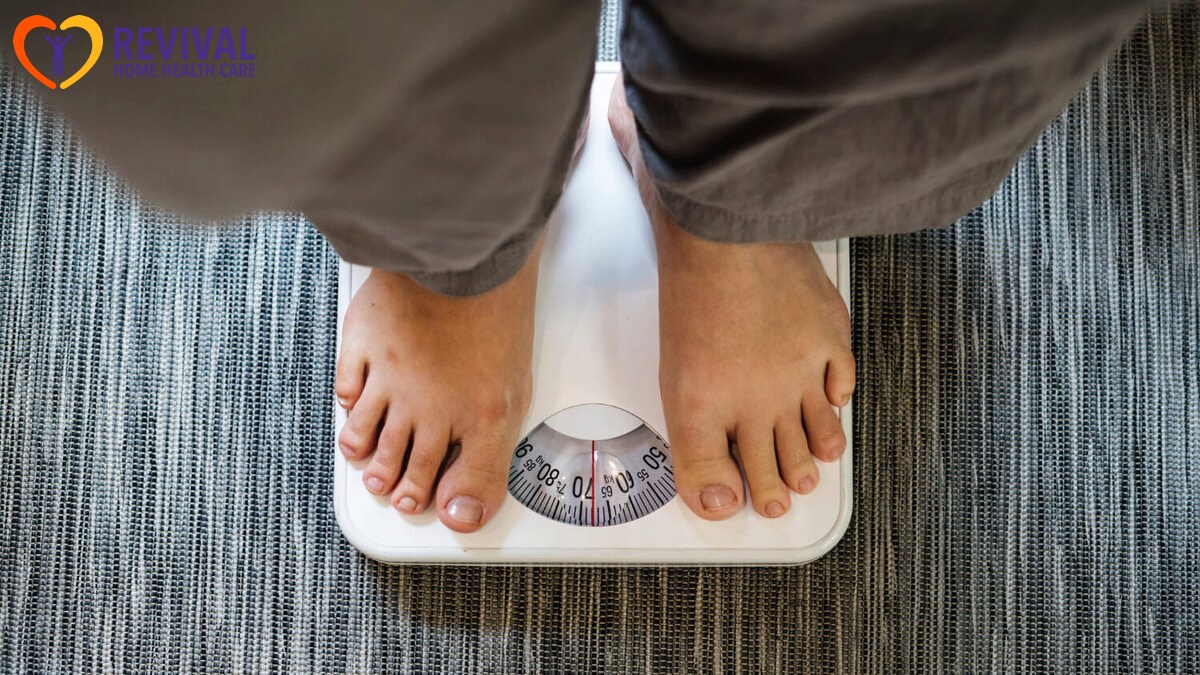Key points:
- Swelling often means fluid buildup from heart failure, early detection prevents complications.
- Daily weight checks, medicine adherence, and salt awareness are core self-care steps.
- Safe use of elevation, compression, and activity reduces discomfort, with medical guidance.
Swelling in the legs and feet is a common heart failure symptom that signals fluid buildup. Gentle leg elevation, light activity, and reducing salt intake can help ease discomfort. Regular weight checks and tracking swelling patterns offer early warning signs of fluid retention before it worsens.
In the second paragraph of this short introduction, consider linking with your care team for extra support, for example exploring options such as heart failure home care that can help with medication education, daily checks, and safe at-home interventions. These approaches complement medical treatment and can help reduce swelling while keeping you safe.

Why heart failure causes swelling in the legs and feet
Swelling, often called peripheral edema, occurs when fluid builds up in body tissues. In heart failure the heart cannot pump and circulate blood as effectively, so pressure backs up in the veins and fluid leaks into surrounding tissues, especially in the lower legs and feet. This is a common symptom of heart failure and a sign the body is holding extra fluid.
Other contributors can include kidney or liver problems, medications, or limited mobility, but when swelling accompanies shortness of breath, rapid weight gain, or fatigue it may point to worsening heart failure and needs prompt attention.
Recognizing warning signs, and when to seek help

Not all swelling is an emergency, but these signs need timely medical contact:
- Sudden or large weight gain, such as 3 to 4 pounds in 24 hours or 5 pounds in a week.
- Increasing shortness of breath, especially when lying flat or at rest.
- Painful, red, hot, or hard areas over the swollen skin, or weeping/ulceration.
- Lightheadedness, fainting, or confusion.
If you notice these signs, contact your healthcare provider promptly, follow your heart failure action plan, or seek urgent care if symptoms are severe.
Everyday relief you can try at home
These practical measures can reduce swelling and improve comfort. Discuss any new approach with your clinician before starting.
Elevate the legs regularly
Raise legs above heart level for 20 to 30 minutes, two to three times daily, to encourage fluid return from the legs. Use pillows or a recliner to keep hips elevated so gravity helps move fluid. Avoid sitting with legs dangling for long periods.
Use compression thoughtfully
Graduated compression stockings or medical compression can push fluid out of swollen tissues and help circulation. However compression must be selected and fitted correctly and may not be safe for everyone, for example people with unstable or decompensated heart failure or certain arterial problems. Check with your clinician or a specialized nurse before using compression.
Track daily weight and symptoms
Weigh yourself at the same time each morning, after using the bathroom and before eating, wearing similar clothing. Rapid weight gain is often the earliest sign of fluid buildup. Keep a simple log and report changes above your care plan threshold.
Follow medication directions, especially diuretics
Diuretics, often called water pills, help the body remove excess fluid and are a cornerstone treatment when swelling worsens. Never skip doses, change timing, or adjust doses without medical advice. If you have concerns about side effects, discuss them with your provider. If you have concerns about side effects, discuss them with your provider or your home health nurse
Watch salt and fluid intake
Reducing sodium helps limit fluid retention. Many clinicians advise aiming for a lower-sodium diet tailored to the individual. Fluid intake may also be limited in some care plans; follow your clinician’s instructions. Adjusting salt and fluids without clinical guidance can be harmful, so confirm targets with your team.
Move regularly, safely
Gentle movement and leg exercises, walking, ankle pumps, and light seated marching, help the calf muscle act as a pump, moving fluid back toward the heart. Avoid prolonged sitting or standing. If you are unsure what activity is safe, ask a physical therapist for a tailored plan.
Skin care and footwear
Swollen skin is fragile. Keep skin clean and moisturized to prevent cracks and infection. Use comfortable shoes that do not press into swollen areas. Inspect skin daily for redness, blisters, or sores. For help with skin integrity and wound care, you can check out the wound care services to get started.
Consider magnesium and other supplements cautiously
Some evidence and clinician reports suggest magnesium supplementation may reduce swelling for some people, but supplements can interact with medications and are not suitable for everyone. Talk to your clinician before starting any supplement.
Medical treatments and adjustments your clinician may consider

If home strategies are insufficient, clinicians may:
- Adjust diuretic type or dose to remove more fluid safely.
- Review and change other medications that can worsen swelling, such as certain blood pressure drugs, when appropriate.
- Assess for other causes of edema, including kidney disease, venous insufficiency, or medication side effects, with blood tests and imaging.
- Arrange specialized interventions, for example targeted compression therapy managed by trained clinicians, or referral to heart failure services when necessary.
Any medication changes should be supervised by your health team to avoid electrolyte imbalance, kidney problems, or low blood pressure.
Compression therapy, when it helps and when to avoid it
Compression therapy is a powerful tool for many causes of leg swelling, yet heart failure requires extra caution. Evidence shows medical compression can reduce leg edema in stable patients, but it may be risky for people with decompensated heart failure or very low circulation. A clinician or tissue viability nurse can assess circulation, heart status, and skin condition before starting compression. If compression is used, choose graduated garments fitted by a professional.
Signs compression may be unsafe include increasing breathlessness, chest discomfort, low blood pressure, or worsening circulation to the feet. Stop compression and seek medical advice if these occur.
Building a simple daily monitoring plan
A predictable routine makes it easier to spot trouble early. Aim for a short checklist you can follow each morning and evening.
Morning checklist (example):
- Take daily weight, record number.
- Check ankles and feet for pitting or increased swelling.
- Note shortness of breath, nighttime urination changes, or new fatigue.
- Take medications as prescribed, with water and food directions as instructed.
Evening checklist (example):
- Elevate legs for 20–30 minutes after activity.
- Inspect skin for redness, blisters, or breaks.
- Review sodium intake for the day and plan adjustments if needed.
Share your log with your clinician or home care nurse regularly, and ask for clear thresholds when you should call.
Tips for caregivers and family members
Caregivers play a vital role in comfort and safety.
- Help with daily weights and logs, and bring changes to appointments.
- Assist with safe elevation and gentle exercises, and encourage medication adherence.
- Monitor skin closely: if you see redness, warmth, open sores, or drainage, contact the clinician.
- Ensure shoes and socks are loose enough, and avoid tight elastic that can block circulation.
If mobility is limited, ask a physical or occupational therapist for caregiver techniques to aid transfers safely.
Practical adjustments at home
Small home changes reduce risk and make daily life easier:
- Keep commonly used items within reach to avoid long walks that cause swelling.
- Use a supportive chair with a footrest for prolonged sitting, and schedule short walking breaks hourly.
- Choose low-sodium cooking methods, and check labels on processed foods.
- Place a few firm pillows or a wedge under the foot of the bed if overnight elevation is recommended by your clinician.
When swelling doesn’t improve, what to expect clinically

If swelling persists despite home measures, clinicians will reassess underlying causes and may order:
- Blood tests for kidney function and electrolytes, to guide diuretic safety.
- Imaging to evaluate venous or lymphatic problems, or evidence of fluid overload.
- Medication reviews to remove drugs that may contribute to edema.
Treatments may move from simple medication adjustments to more structured heart failure management, including telehealth check-ins, home nursing visits, or clinic-based diuretic adjustments.
Practical examples, short-term fixes and what to avoid
Short-term fixes that often help:
- A supervised increase in diuretic dose for a few days, when prescribed.
- More frequent leg elevation after activity.
What to avoid:
- Self-adjusting prescription medications without clinician approval.
- Tight elastic bands, socks, or shoes that leave deep marks.
- Ignoring rapid weight gain or worsening breathlessness.
FAQs
Are swollen legs always caused by heart failure?
No, swollen legs can come from many causes, including venous disease, kidney or liver problems, medications, or prolonged sitting. Clinical assessment determines the cause.
How much daily weight change should make me call my provider?
A common guideline is to call if you gain about 3 to 4 pounds in 24 hours, or 5 pounds in a week, but follow your clinician’s personalized threshold.
Can I use compression stockings if I have heart failure?
Possibly, but only when a clinician confirms it is safe. Compression can help stable cases but may be unsafe in decompensated heart failure or poor arterial circulation.
Protect Heart Health With Skilled Home Nursing Care
Heart failure requires close monitoring and daily management. Revival Home Health Care provides specialized in-home nursing that focuses on fluid balance, medication adherence, and symptom control.
Our nurses educate patients and families on lifestyle changes, help track progress, and coordinate care with cardiologists. With the right home support, swelling and fatigue can be managed effectively, reducing hospital visits and improving comfort.
Contact us today to schedule an in-home evaluation and start a heart care plan built around your needs.


 75 Vanderbilt Ave Staten Island, NY 10304
75 Vanderbilt Ave Staten Island, NY 10304 info@revivalhhc.org
info@revivalhhc.org 718.629.1000
718.629.1000